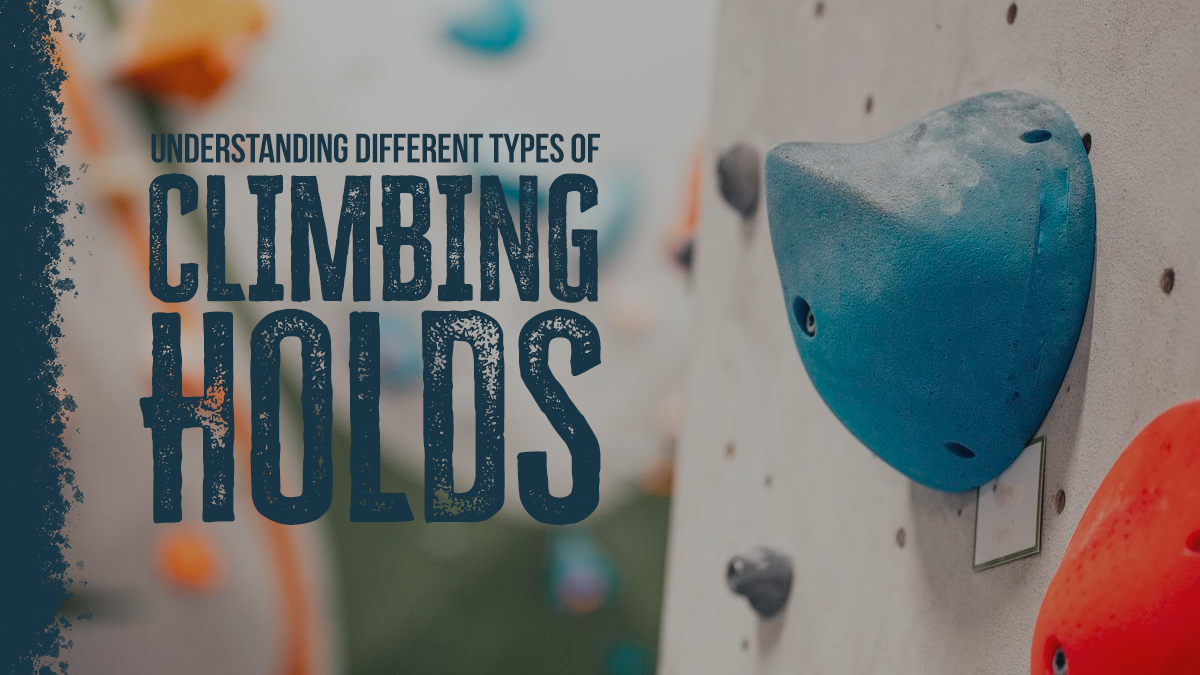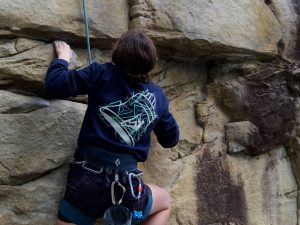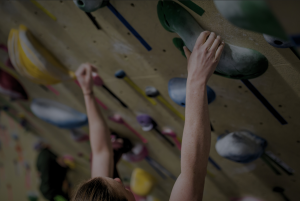Climbing lingo is like speaking another language. A lot of it needs to make more sense to the common ear. Learning the different types of climbing holds is the first step in grasping the climbing language. All the different types of holds are words you will recognize, and once each hold is explained, you will hopefully have an “oh…that makes sense” moment.
Let’s jump in!
Jug
Whether you know it or not, every climber has pulled on lots of jugs. Everyone pulls on jugs. Jugs are the big bucket holds you can stick your entire hand in, much like the handle of a jug! They are the ones that spark a sigh of relief when grabbed onto. Due to their depth, these holds are the easiest to hold on to. As humans with a survival instinct, we tend to squeeze climbing holds harder than we need to to stay on the wall. That is most applicable to jugs. Jugs are such good holds that no one needs to squeeze their life out to hold on, especially when your feet are on the wall too. Next time you hold on to jugs, try to hold on as little as you need to stay on the wall. You’ll be surprised at how softly you can hold jugs without falling!
Crimp
Crimp covers a vast range of holds in a climbing gym and outside. The more beginner-friendly crimps are smaller versions of a jug, meaning they are in-cut holds, but you can only fit a finger pad or two on the hold. The smaller the depth of the crimp (and the less of your finger you can work on it), the more challenging it is to hold on to. Some of the more advanced crimps will either be flat on top or even rounded. There is one important thing to note about crimps. Crimps (specifically smaller crimps) put a lot of strain on your finger tendons since the tendons hold up most of your body weight. That’s why they are so challenging! It takes lots of climbing and training to reach the ability level to hang off small crimps with ease and no injury. There are three ways to hold on to crimps, each putting a different strain on your finger tendons. Some crimping positions are safer than others.
The first and most dangerous crimping position is when your middle knuckles on each finger are >90 degrees. Some people even wrap their thumb over the top of each finger while crimping. That is known as the full crimp. The second, much less risky than a full crimp, is the half crimp. The half crimp is when your middle knuckles on each finger are =90 degrees. And the third, which is the least risky crimping position, is when your middle knuckles on each finger are <90 degrees.
Pinch
A pinch might be the easiest hold to understand, but certainly not the easier hold to grab onto. Pinching is when you have your thumb on one side of the hold and the rest of your fingers on the other side. They come in various widths, from very narrow, crimp-like pinches to extremely wide, slopey pinches!
A pocket is one of those holds that you either love or hate. Pockets are holds with holes in them. Some are large, and you can fit your entire hand in them (these feel like jugs), and some are only small enough to squeeze one or two fingers in. If you have smaller fingers, you can squeeze three fingers in a pocket designed for two fingers, giving you an advantage. If you have larger fingers, pulling off of just two finger pockets might be challenging if your fingers feel jammed. When pulling off pockets, it’s essential to be careful of injury since the load on two fingers will strain your tendons more than if the load was spread out between four fingers. Typically, in two-finger pockets, which are the most common, using your middle finger and your ring finger will provide you with the most pulling strength since these two fingers work together using separate tendons.
Sloper
Last but not least, let’s introduce slopers. Slopers are the holds in the gym that are sloped and rounded on the top. To beginners, they will likely feel impossible. To intermediate and advanced climbers, there are still some slopers that feel impossible. The only way to succeed on slopers is to understand your center of gravity, hip movement, and foot placement all while on the wall. Finding the correct body position is essential to conquering slopers, which is why they might be the most challenging hold on every wall.
With your new-found knowledge of climbing holds, next time you are at the gym, try to identify and then practice using each type of hold!









